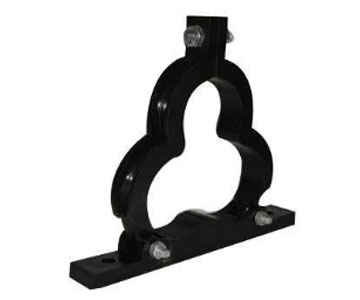We are in the business of Manufacturing high quality Nylon Clamps conforming to most demanding standards to various industries since 1972.


Features
We are in the business of Manufacturing high quality Nylon Clamps conforming to most demanding standards to various industries since 1972.

In various M.O.C., as below
Application
Nylon Clamps are suitable for supporting Single Core PVC/ HRPVC, XLPE, XLPE Insulated Aluminium, Un- Armoured, Earth And Un Earth Power Cables from 1.1 Kv to 132 KV Grade. 3 Phase A.C. Circuits in trefoil formation in Generation Stations, Sub-Stations, Thermal Power Stations, Switchgear Plants, Industrial Installation, Terminal Kits, and Straight through Jointing Kits etc. These can be used for indoor or outdoor for vertical or horizontal running cables inside trenches or on racks / galleries.
Purpose of use of Nylon Clamps